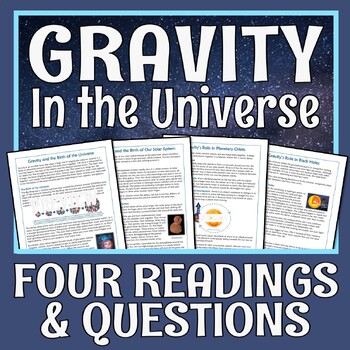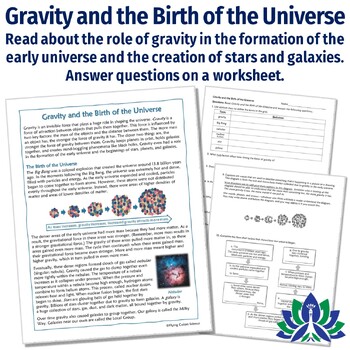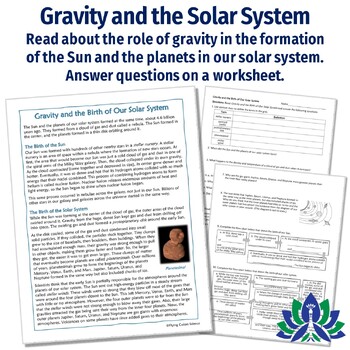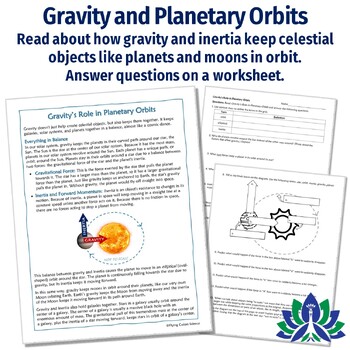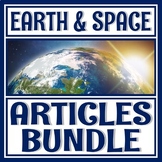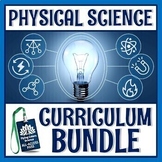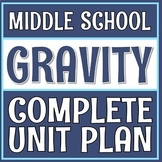The Role of Gravity in the Universe Reading Articles and Worksheets MS-ESS1-2
- PDF
- Google Apps™
- Easel Activity

Also included in
- SAVE MORE THAN 30% OFF LIST PRICES with this set of 44 Earth and space science reading comprehension articles. Each resource includes an engaging Earth or space science article and a corresponding worksheet.⭐ All articles include both print and Google Slides versions!In each of these activities, stuPrice $119.00Original Price $177.87Save $58.87
- Never search for "something to do tomorrow" ever again! This bundle contains PRINT AND GO lessons, NO PREP activities, LOW PREP labs, and ENGAGING articles to supplement and thoroughly enhance an Earth and space science course. Every included resource is easy to implement, standards-based, and high-Price $399.99Original Price $639.06Save $239.07
- Never search for "something to do tomorrow" ever again! This bundle contains PRINT AND GO lessons, NO PREP activities, LOW PREP labs, and ENGAGING articles to supplement and thoroughly enhance a physical science course. Every included resource is easy to implement, standards-based, and high-quality.Price $399.99Original Price $671.34Save $271.35
- SAVE 50% OFF LIST PRICES! This complete gravity unit focuses ONLY ON GRAVITY and includes 8 high-quality lessons to teach and assess gravity at the middle school level! The included gravity activities are both engaging and rigorous. Plus, all included resources have both print and digital options tPrice $19.00Original Price $38.20Save $19.20
Description
Four separate lessons teach students about the role of gravity in the motions within galaxies and the solar system. Students will learn about the effects of gravity in the universe and our solar system and how gravity and inertia balance to create the orbit of planets and moons. Plus, a lesson about the gravity in black holes!
⭐ Get this set at a HUGE discount in our done-for-you Gravity Unit!
Includes both print and Google Slides options to assign!
Each lesson includes a 1-page reading with its own worksheet of text-dependent questions. This lesson set has four distinct sections, allowing you to focus on one aspect of gravity in the universe at a time.
The four separate lessons include:
- Gravity and the Birth of the Universe (Big Bang)
- Gravity and the Birth of Our Solar System (Sun and Planets)
- Gravity's Role in Planetary Orbits (Gravity and Inertia)
- Gravity's Role in Black Holes (Free Bonus Lesson!)
Teacher Notes:
- Includes answer keys for each section.
- Please note: This PDF resource is NOT editable.
- A link to the digital Google Slides version is provided within the downloadable PDF.
- Related NGSS Standard: MS-ESS1-2 Earth's Place in the Universe; Develop and use a model to describe the role of gravity in the motions within galaxies and the solar system.
- Related NGSS Standard: MS-PS2-4 Motion and Stability: Forces and Interactions; Construct and present arguments using evidence to support the claim that gravitational interactions are attractive and depend on the masses of interacting objects.
⭐⭐⭐ Click here to get 5 FREE EARTH & SPACE SCIENCE lessons! ⭐⭐⭐

